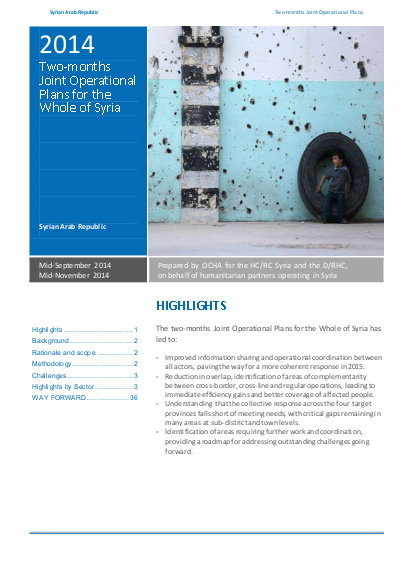
As the scale of needs continues to grow, and following the adoption of resolutions 2139 and 2165, by the United Nations Security Council, humanitarian actors operating inside Syria from Damascus or across the Turkish and Jordanian borders met in Beirut on 3 September 2014 and decided to embark on a “Whole of Syria” (WOS) approach in an effort to improve the effectiveness and operational reach of their collective responses.
The cornerstone of the WOS approach is a commitment by all humanitarian partners to a coordinated response through the IASC sector / cluster approach to increase the efficiency and effectiveness of their response through (1) developing a principled, predictable and systematic operational planning process; (2) ensuring greater coherence across the different operational modalities (ie. cross-line, cross-border or regular programmes) through improved coordination; and (3) strengthening information-sharing.
The two-months joint operational plans were designed as a practical test to implement the WoS approach on a limited scale before the roll out of the 2015 Humanitarian Planning cycle. The plans cover the provinces of Idleb, Aleppo, Quneitra and Dara in the areas of WASH, Food security, Health and NFI/Shelter.
The purpose of the two-months joint operational plans is to maximize the collective reach to affected populations, by capitalising on the comparative advantage of all actors and their partners. In addition it aims to reduce overlap and inefficiencies through agreeing and operationalizing a set of clear criteria to identify which actor is best placed to deliver in a particular location, either through cross -border, cross-line, or a combination of both when warranted.
The plans provide information on identified needs at the sectoral level and planned programming in the concerned governorates for the months of October and November 2014. Each sector carried out a review of the gaps at governorate and sub-district levels, as well as a de-conflicting exercise at town level, indicating the type of response planned, capacity and partnership.